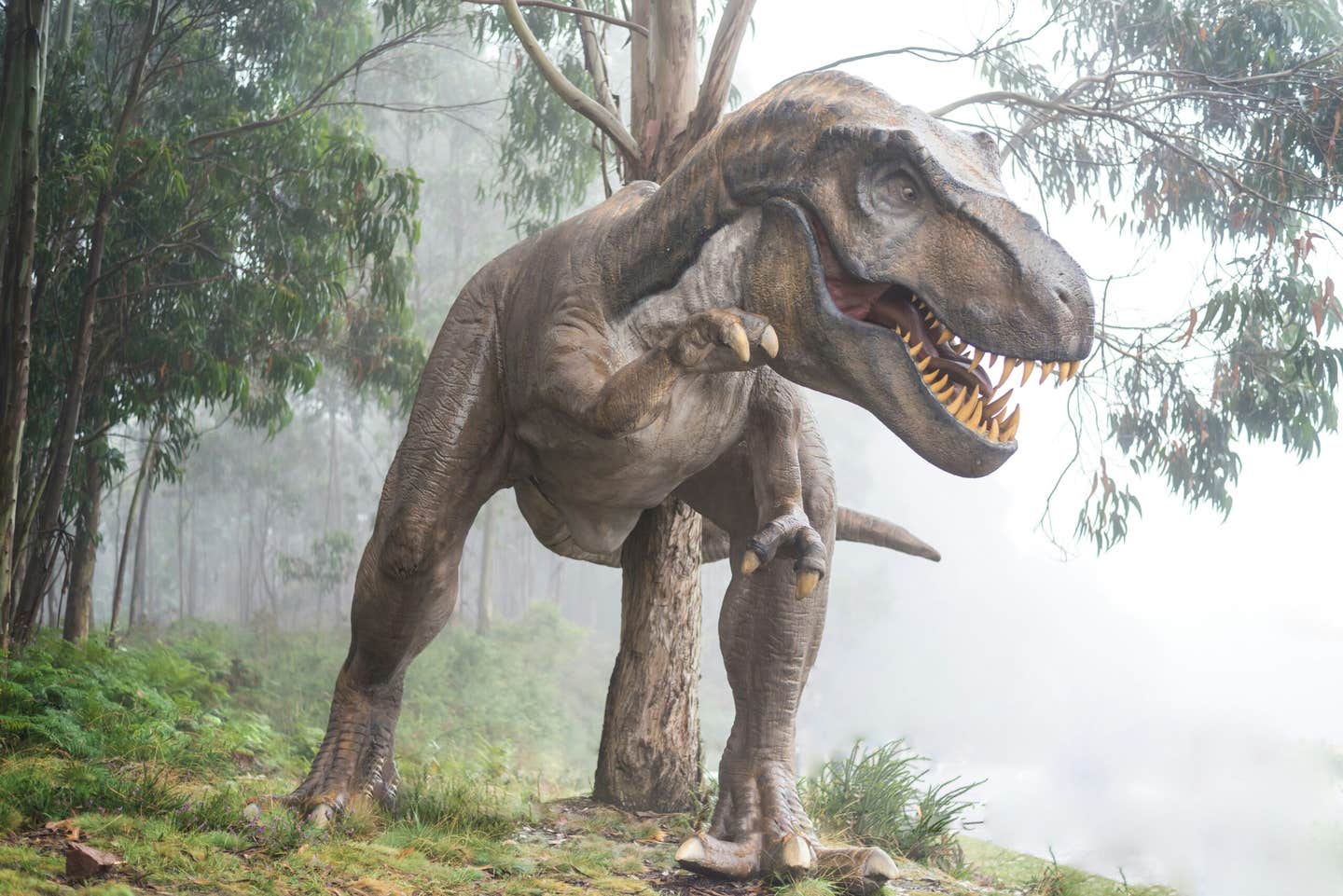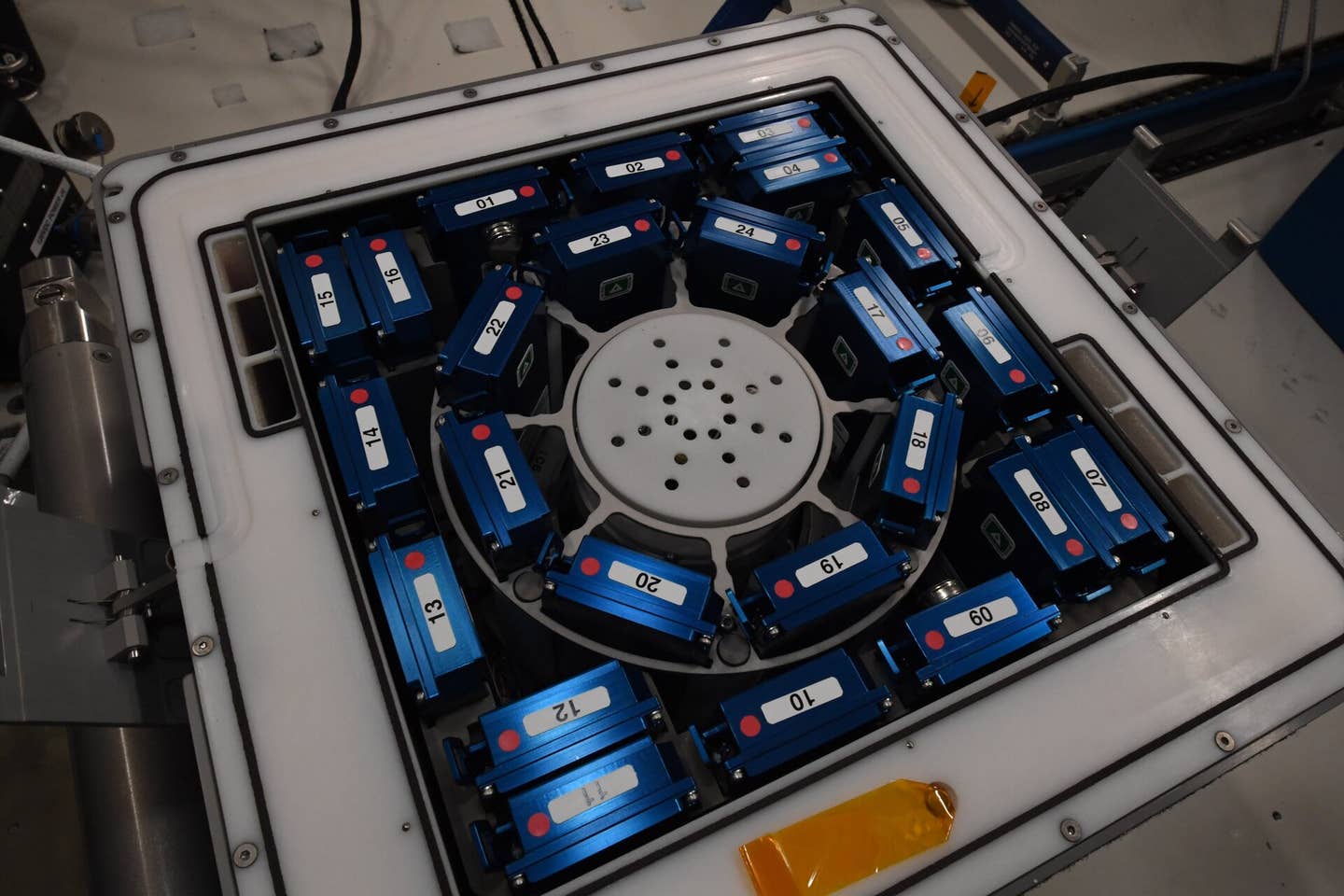How did the T. rex’s bite force compare to the largest carnivorous dinosaurs
Researchers used advanced 3D analysis to examine the skull mechanics of 18 species of dinosaurs that include the largest bipedal predators in history.

T. rex had one of the strongest bites in history, while other giant carnivorous dinosaurs hunted with slicing jaws. (CREDIT: Fausto García-Menéndez on Unsplash)
When you think of the largest carnivorous dinosaurs, you might picture a massive predator biting through bone in one devastating snap. That image fits Tyrannosaurus rex, but new research shows it doesn’t hold true for all of its giant, two-legged rivals.
A study published in Current Biology used advanced 3D analysis to examine the skull mechanics of 18 species of theropods, the group that includes the largest bipedal predators in history. The results show that T. rex evolved an extreme “high-power, high-stress” feeding style, while other giants—including spinosaurs and allosaurs—relied on weaker, slicing bites. These differences reveal that even among the largest predators of the Mesozoic, there wasn’t a single winning formula for survival.
“Carnivorous dinosaurs took very different paths as they evolved into giants in terms of feeding biomechanics and possible behaviors,” said Andrew Rowe of the University of Bristol. “Tyrannosaurs evolved skulls built for strength and crushing bites, while other lineages had comparatively weaker but more specialized skulls.”
A closer look at the giants
Theropods first appeared about 228 million years ago in the Late Triassic. By the Early Jurassic, predators like Dilophosaurus had become the largest hunters on land. Over millions of years, different lineages independently evolved gigantic forms, including the ∼5,600-kg allosauroid Acrocanthosaurus and the ∼8,000-kg megalosauroid Spinosaurus.
Despite their shared size, these predators hunted and fed in very different ways. Rowe and co-author Emily Rayfield wanted to know if body size and walking on two legs led to similar skull mechanics—or if evolution took other routes.
Their approach combined CT scans, handheld 3D scanners, and photogrammetry to build precise digital skull models. They sometimes scanned individual fossil bones, then assembled them like a three-dimensional puzzle. The goal was to test three ideas: that bigger predators reduced skull stress through scaling, that tyrannosauroids had unusually high stress from massive bite forces, and that smaller species would show higher stress when their skulls were scaled up to match the size of giants.
Related Stories
- The rise of T. rex: New findings explain their size and origins
- How smart was the T. Rex? New study yields surprising results
What the models revealed
The analysis used finite element analysis (FEA), a method engineers use to predict how objects handle forces. By applying simulated muscle forces to each skull, the researchers measured how much stress the bones could take before risking damage.
The results were striking. Giant tyrannosaurids such as T. rex had skulls optimized for extraordinary bite forces, even if that meant enduring more stress. Other lineages, like the allosauroids and spinosaurs, took the opposite approach—maintaining lower bite forces that kept stress levels down.
In fact, when skulls were scaled to the same size, smaller theropods often experienced higher stresses than their giant relatives. This suggests that size alone didn’t dictate bite strength. Instead, skull shape, muscle volume, and evolutionary strategy all played major roles.
Different tools for different hunts
To understand the practical effects of these designs, Rowe compared allosauroids like Allosaurus and Giganotosaurus to modern Komodo dragons. Their lighter skulls and flexible joints weren’t built for bone-crushing power. Instead, these predators likely attacked by slashing at prey, inflicting repeated wounds until the animal weakened.
“They had slicing bites, hacking away flesh off prey,” Rowe explained. “It was more of a low stress, low power strategy.”
Spinosaurs, including Spinosaurus and Baryonyx, were even more specialized. Earlier research by Dave Hone and Tom Holtz suggests they often hunted near shorelines, catching fish and other aquatic prey. Fossil evidence supports a varied diet: a pterosaur fossil has been found in a spinosaur’s stomach, and remains of the herbivorous Iguanodon have been discovered with Baryonyx teeth.
“They were generalists, but our results show they weren’t these massive bone-crunching predators like the T. rex,” Rowe said.
Why T. rex was different
Tyrannosaurids had stiff, akinetic skulls—meaning the joints allowed almost no movement. Combined with deep skulls, thick bone, and massive jaw muscles, this design produced some of the most powerful bites in the animal kingdom.
“They were very much like big crocodiles with extremely strong, reinforced jaws and powerful muscles that could pulverize bones,” Rowe said.
Evidence from fossils backs this up. At the American Museum of Natural History in New York, a hadrosaur skeleton shows a T. rex tooth embedded in its back. The surrounding bone shows healing, meaning the prey survived the initial attack—proof that T. rex actively hunted and sometimes failed.
Rowe believes T. rex was a specialist ambush predator, targeting large and mobile prey. Its “high stress, high power” strategy may have been a response to Late Cretaceous ecosystems, where competition included other carnivorous dinosaurs and massive crocodilians.
A world with many apex predators
In Jurassic Park III, a Spinosaurus kills a T. rex with a single crushing bite. Rowe’s findings suggest that’s unlikely. The two species never met in life—they lived on different continents at different times—but if they had, he doubts Spinosaurus could match the brute force of a tyrannosaur.
“The T. rex was built to fight like that; the Spinosaurus really wasn’t,” he said.
This diversity of feeding strategies explains how multiple giant predators could share the same ecosystems without wiping each other out. Some went for bone-breaking power, others for repeated slicing wounds, and others for mixed diets including fish.
“It drove home how evolution can produce multiple ‘solutions’ to life as a large, carnivorous biped,” Rowe said.
The findings also challenge the idea that the biggest predators all hunted in the same way. In reality, each lineage adapted to its own set of challenges, shaped by prey, habitat, and competition.
Past Studies and Findings
Earlier research has shown that bite force in living reptiles like crocodiles scales with body mass, but most dinosaur studies relied on 2D skull outlines. Those methods overlooked the complex ways bones absorb stress. The introduction of CT scanning, photogrammetry, and finite element analysis in paleontology has allowed far more accurate reconstructions.
Studies on Spinosaurus anatomy suggested it may have been semi-aquatic, supported by its crocodile-like snout and conical teeth. Evidence from Baryonyx stomach contents showed both fish and terrestrial prey, pointing to a varied diet. Work on Allosaurus skull mechanics compared it to large modern lizards, showing it likely used repeated strikes rather than single lethal bites.
In tyrannosaur research, earlier studies confirmed T. rex’s bite force exceeded that of any living terrestrial animal. Fossil damage patterns on prey bones have supported the idea of active predation, not just scavenging.
Practical Implications of the Research
Understanding the biomechanics of extinct predators offers more than just insight into their behavior—it helps reconstruct ancient ecosystems. By identifying different feeding strategies, scientists can better estimate predator-prey relationships, population sizes, and habitat use in the Mesozoic.
This research also improves how dinosaurs are portrayed in education and media, replacing one-size-fits-all assumptions with a more accurate view of ecological diversity. In paleobiology, refining biomechanical models strengthens reconstructions of other extinct species, from saber-toothed cats to prehistoric marine reptiles.
The study’s methods—especially combining CT scans with FEA—are valuable beyond paleontology. They can inform engineering designs, medical prosthetics, and robotics, where understanding stress and load-bearing in complex structures is essential.
Note: The article above provided above by The Brighter Side of News.
Like these kind of feel good stories? Get The Brighter Side of News' newsletter.



